
Toktar Ongarbayuly Aubakirov is a retired Kazakh Air Force officer and a former cosmonaut. He is the first person from Kazakhstan to go to space.

Talgat Amangeldyuly Musabayev is a Kazakh test pilot and former cosmonaut who flew on three spaceflights. His first two spaceflights were long-duration stays aboard the Russian space station Mir. His third spaceflight was a short duration visiting mission to the International Space Station, which also carried the first paying space tourist Dennis Tito. He retired as a cosmonaut in November 2003. Since 2007 he has been head of KazCosmos, Kazakhstan's National Space Agency.
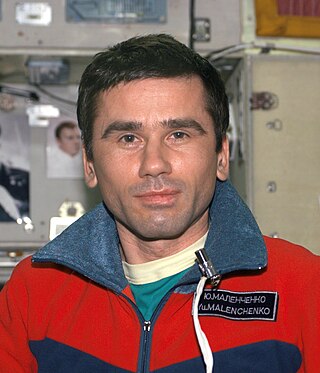
Yuri Ivanovich Malenchenko is a retired Russian cosmonaut. Malenchenko became the first person to marry in space, on 10 August 2003, when he married Ekaterina Dmitrieva, who was in Texas, while he was 240 miles (390 km) over New Zealand, on the International Space Station. As of June 2016, Malenchenko ranks second for career time in space due to his time on both Mir and the International Space Station (ISS). He is a former commander of the International Space Station.
Franz Artur Viehböck is an Austrian electrical engineer and cosmonaut, who became the first Austrian to fly in space. He visited the Mir space station in 1991 aboard Soyuz TM-13, returning aboard Soyuz TM-12 after spending just over a week in space.

Sergei Konstantinovich Krikalev is a Russian mechanical engineer, former cosmonaut and former head of the Yuri Gagarin Cosmonaut Training Center.
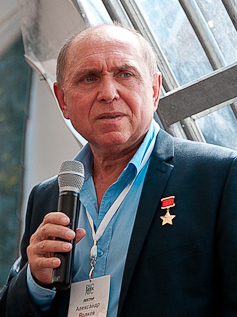
Aleksandr Aleksandrovich Volkov is a retired Soviet cosmonaut. He is a veteran of 3 space flights, including twice to the Mir Soviet space station, and is the father of cosmonaut Sergey Volkov.

Anatoly Pavlovich Artsebarsky is a former Soviet cosmonaut.

Soyuz TM-7 was a crewed Soyuz spaceflight to Mir. It launched on 26 November 1988, at 15:49:34, and was the start of the fourth long duration expedition to Mir, Mir EO-4. The crew would join the third crew member of EO-4, cosmonaut/physician Valeri Polyakov, who was on Mir for the second half of EO-3. Also launched by Soyuz TM-7 was French astronaut Jean-Loup Chrétien, who would take part in the 24-day French mission known as Mir Aragatz. The spacecraft Soyuz TM-7 remained docked to Mir for the duration of EO-4. At the end of EO-4 in April 1989, due to delays in the launch schedule, Mir was left uncrewed, and all three EO-4 crew members were transported back to Earth.

Soyuz TM-12 was the 12th expedition to Mir, and included the first Briton in space, Helen Sharman.
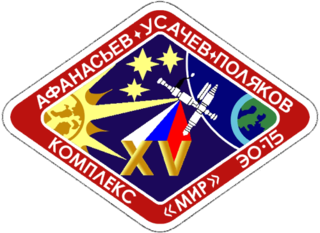
Soyuz TM-18 was launched from Baikonur Cosmodrome and landed 112 km north of Arkalyk. TM-18 was a two-day solo flight that docked with the Mir space station on January 10, 1994. The three cosmonauts became the 15th resident crew on board Mir. The crew did research work in space flight medicine, primarily by cosmonaut Valeri Polyakov during his long-term flight, and accomplished 25 different experiments.

Soyuz TM-31 was the first Soyuz spaceflight to dock with the International Space Station (ISS). The spacecraft carried the members of Expedition 1, the first long-duration ISS crew. It was launched from Baikonur Cosmodrome in Kazakhstan at 07:52 UT on October 31, 2000, by a Soyuz-U rocket.

Soyuz TM-22 was a Soyuz spaceflight to the Soviet space station Mir. It launched from Baikonur Cosmodrome Launch Pad 1 on September 3, 1995. After two days of free flight, the crew docked with Mir to become Mir Principal Expedition 20 and Euromir 95. Mir 20 was a harbinger of the multinational missions that would be typical of the International Space Station. After 179 days, 1 hour and 42 minutes on orbit, Reiter obtained the record for spaceflight duration by a Western European.
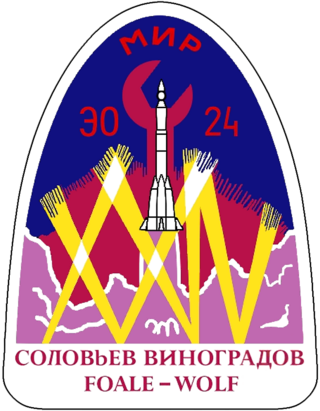
Soyuz TM-26 was a Russian spaceflight that ferried cosmonauts and supplies to Mir. It was the 32nd expedition to Mir. It was launched by a Soyuz-U rocket from Baikonur Cosmodrome on August 5, 1997. The main mission was to transport two specially-trained cosmonauts to repair or salvage the troubled space station.

Soyuz TM-30, also known as Mir EO-28, was a Soyuz mission, the 39th and final human spaceflight to the Mir space station. The crew of the mission was sent by MirCorp, a privately funded company, to reactivate and repair the station. The crew also resupplied the station and boosted the station to an orbit with a low point (perigee) of 360 and a high point (apogee) of 378 kilometers ; the boost in the station's orbit was done by utilizing the engines of the Progress M1-1 and M1-2 spacecraft. At that time a transit between Mir and the International Space Station was already impossible - such a transfer was deemed undesired by NASA - and the orbital plane of ISS had been chosen some time before to be around 120 degrees away from that of Mir. The mission was the first privately funded mission to a space station.

Andrey Ivanovich Borisenko is a Russian cosmonaut. He was selected as a cosmonaut in May 2003, and is a veteran of two long duration missions to the International Space Station.
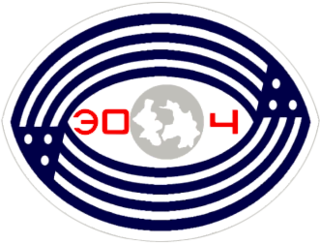
Mir EO-4 was the fourth long-duration expedition to the Soviet space station Mir. The expedition began in November 1988, when crew members Commander Aleksandr Volkov and Flight Engineer Sergei Krikalev arrived at the station via the spacecraft Soyuz TM-7. The third crew member of EO-4, Valeri Polyakov, was already aboard Mir, having arrived in August 1988 part way through the previous expedition, Mir EO-3.
The National Space Agency of the Republic of Kazakhstan, also known as KazCosmos, or KazKosmos, is Kazakhstan's national space agency, and was officially established on 27 March 2007.
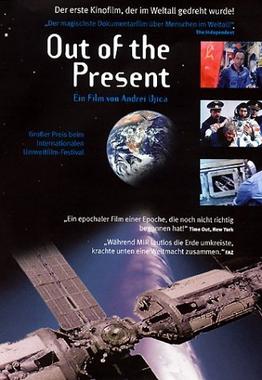
Out of the Present is a 1995 documentary film by Andrei Ujică that deals with the prolonged stay of the Russian cosmonaut Sergei Krikalev at space station Mir. This was the first time a 35 mm film camera was used in space.
The space program of Kazakhstan is originated from the dissolution of the Soviet Union in 1991, when Kazakhstan declared their independence. The Kazakh space program consist of cosmonaut and satellite missions. The only launch site situated at Kazakhstan is Baikonur Cosmodrome, which is leased to Russia. The program is led by KazCosmos since 2007.

The Roscosmos Cosmonaut Corps is a unit of the Russia's Roscosmos State Corporation that selects, trains, and provides astronauts as crew members for the Russian Federation and international space missions. It is part of the Yuri Gagarin Cosmonaut Training Center, based at Star City in Moscow Oblast, Russia.



















